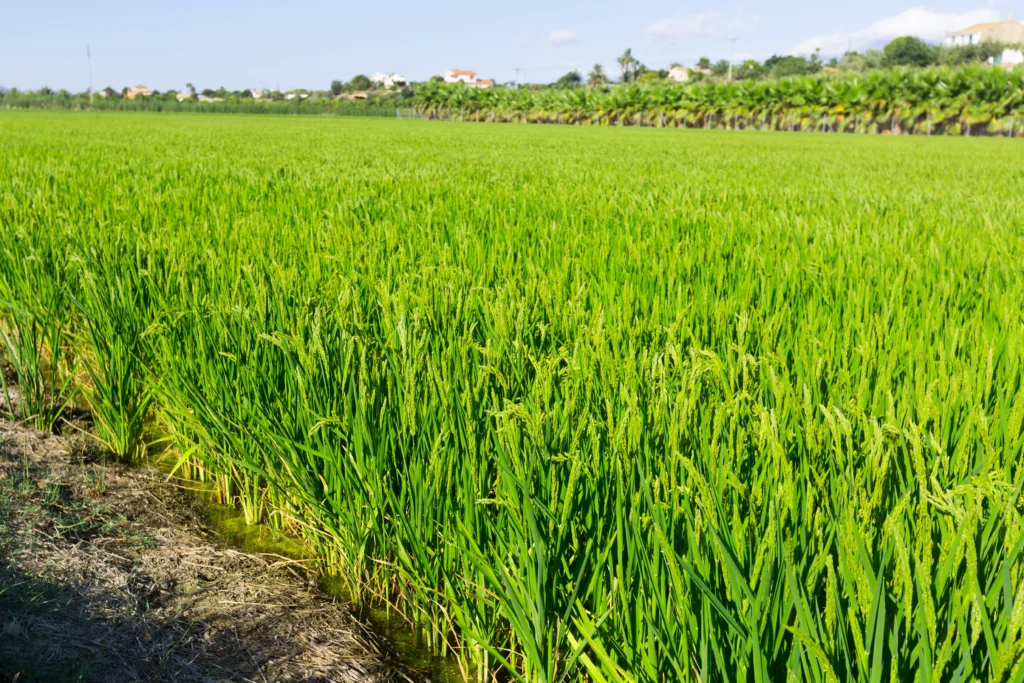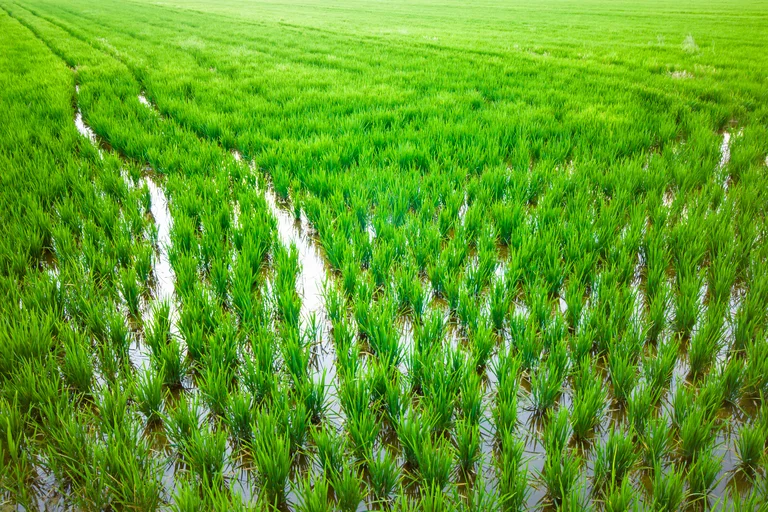Rice Plants Reduce Methane Emissions Naturally
Rice feeds more than half of the world’s population, but it’s also a major source of methane emissions from rice fields. New research shows that rice plants can reduce methane emissions naturally through enhanced root traits, smarter breeding, and sustainable farming practices. Scientists believe these climate-smart rice varieties could help farmers grow more efficiently while protecting the planet.
Let’s explore how rice plants can help reduce methane emissions naturally and what this means for sustainable agriculture.
The Hidden Link Between Rice Roots and Methane
Rice grows in waterlogged fields, where the lack of oxygen encourages methane-producing bacteria. These microbes feed on organic matter and release methane, which escapes through rice roots into the air.
Rice roots have a unique tissue called aerenchyma, which contains small, air-filled spaces that let gases move between the soil and the atmosphere. While this helps rice survive in flooded conditions, it also gives methane an easy way to escape into the air.
However, not all rice plants release methane at the same time. According to research, changes in nutrient use, oxygen release, and root structure can change the amount of methane that escapes. Some rice varieties even release more oxygen through their roots, which helps suppress methane-producing microbes.
New Breeding Tools for Low-Methane Rice
Scientists are now using cutting-edge techniques to breed rice varieties that naturally release less methane.
One of the most promising methods is genomic selection—a technique that predicts how well a plant will perform using DNA data. This allows breeders to quickly identify rice lines with traits linked to low methane production.
By combining field trials with digital soil and water sensors, researchers can now see how specific rice genes interact with real farm environments. This helps bridge the gap between global research and local farming—turning lab discoveries into climate-smart field results.
Farmers now have access to new low-emission rice varieties that maintain high yields thanks to these innovations, which are revolutionizing sustainable rice farming.
How Rice Plants Reduce Methane Emissions Naturally

The amount of methane that escapes into the atmosphere is greatly affected by rice roots. While their aerenchyma tissue creates channels for gas movement, the organic compounds called root exudates that are released by roots affect microbial activity below ground.
Some rice varieties release more oxygen into the soil, which helps reduce methane-producing microbes. Others have smaller aerenchyma, limiting gas movement. Over time, selecting for these root traits can significantly reduce emissions.
According to the IPCC (
Intergovernmental Panel on Climate Change), methane is 81 times more potent than carbon dioxide over 20 years. That means even small reductions in methane from rice fields can have a major climate impact.
From Laboratory Research to Rice Fields
Applying these scientific insights to real-world rice farming is the next big step.
These days, breeding initiatives are finding rice varieties that produce high yields while releasing less methane. To identify the most climate-friendly combinations, they monitor crucial characteristics like root structure, nitrogen efficiency, and oxygen release.
Public seed banks and agricultural institutes are also working to include these traits in regional breeding targets. Over time, low-methane rice varieties could become the new normal—helping farmers grow sustainably without changing their traditional methods.
When Nitrogen Tips the Scale
Rice fields release other greenhouse gases besides methane. Excess nitrogen fertilizer also increases nitrous oxide (N₂O), another powerful gas.
Field research indicates that N₂O emissions increase significantly when nitrogen rates surpass crop requirements. However, emissions decrease and yields frequently increase when fertilizer use is balanced.
Breeding rice for higher nitrogen-use efficiency (NUE) helps plants make the most of every gram of fertilizer, reducing both methane and nitrous oxide emissions while keeping productivity high.
Reducing Rice Farm Emissions
Screen rice lines under both flooded and alternate wetting conditions to identify those with naturally low emissions.
Measure yield-scaled emissions, not just per acre, to reflect true efficiency.
Optimize nitrogen timing and rate—applying fertilizer only when plants need it.
Select root traits like smaller aerenchyma and efficient gas regulation for long-term methane control.
Climate policy in rice fields
The impact of rice genetics goes far beyond the field.
Countries can meet their Paris Agreement targets by reducing methane through crop breeding without forcing farmers to make drastic changes to their fertilizer or irrigation practices.
Many national greenhouse gas inventories already include methane from rice farming, meaning genetic improvements can directly lower reported emissions.
Farmers who switch to low-emission rice varieties are starting to receive advantages from climate finance and carbon credit schemes. These initiatives provide farmers with a financial incentive to cultivate climate-smart rice by linking plant genetics to confirmed reductions in greenhouse gas emissions.
Global Impact In Rice Fields
Globally, rice production accounts for almost 10% of agricultural greenhouse gas emissions. Making the switch to low-methane rice could significantly reduce the potential for global warming.
If widely adopted, these crops could have a climate impact comparable to removing millions of cars from the roads. And the same science could extend to other crops—like wheat, maize, or canola—identifying traits that lower nitrous oxide or carbon dioxide emissions.
This approach shows how plant breeding on its own can advance agriculture toward net-zero emissions and a more sustainable food supply.
By promoting low-methane rice varieties and improving nitrogen-use efficiency, farmers can turn rice farming into a tool for climate-smart agriculture.
FAQS
Q1. Do rotting plants release methane?
Ans. Methane is produced by rotting vegetation and would normally leak into the atmosphere in small amounts. However, methane is stored in the mud by the decaying vegetation behind a dam. All of that methane can be abruptly released when the water supply drops behind a dam.
Q2. Which plants absorb methane?
Ans. It is generally accepted that methane is released by a variety of aquatic plants with roots in anoxic sediment, including rice. It is also known that some trees, like alder, can absorb methane from soil gas or water and release it into the atmosphere (Rusch & Rennenberg 1998).
Q3. Can breeding new rice varieties really reduce methane emissions?
Ans. Some rice varieties have root structures that release less methane. Scientists are using genomic selection to identify and breed these low-emission rice lines faster.
Q4. What is climate-smart rice?
Ans. Rice varieties bred to produce less methane, use fertilizer more effectively, and thrive under sustainable farming methods are referred to as climate-smart rice.

